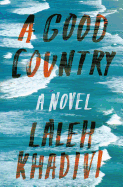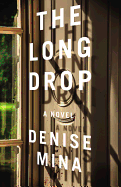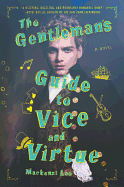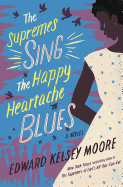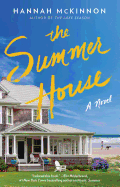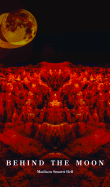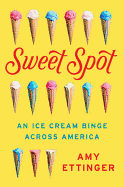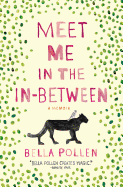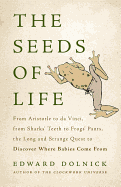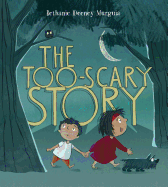Week of Tuesday, June 27, 2017
Edward Kelsey Moore is a professional cellist and the author of numerous works of short fiction that have appeared in such publications as the New York Times. His second novel, The Supremes Sing the Happy Heartache Blues (Holt), is reviewed below.
.jpg) |
|
| photo: Laura Hamm | |
I have spoken and written a lot about my life as both an author and a professional cellist. I've detailed how, as a writer without a formal literary education, I use my familiarity with contrasting themes, variation in tone and key and resolution in a musical context to bring structure to new writing projects. I've declared my gratitude for having two demanding and wonderful jobs, comparing my situation to balancing a plate of cherry pie on one palm and a plate of chocolate cake in the other. I've also described how my dual career sometimes becomes a wild juggling act during which I toss those plates into the air and try desperately to snatch a satisfying bite as each whizzes by. It's still fun, but there is a circus clown-on-a-unicycle franticness to it. 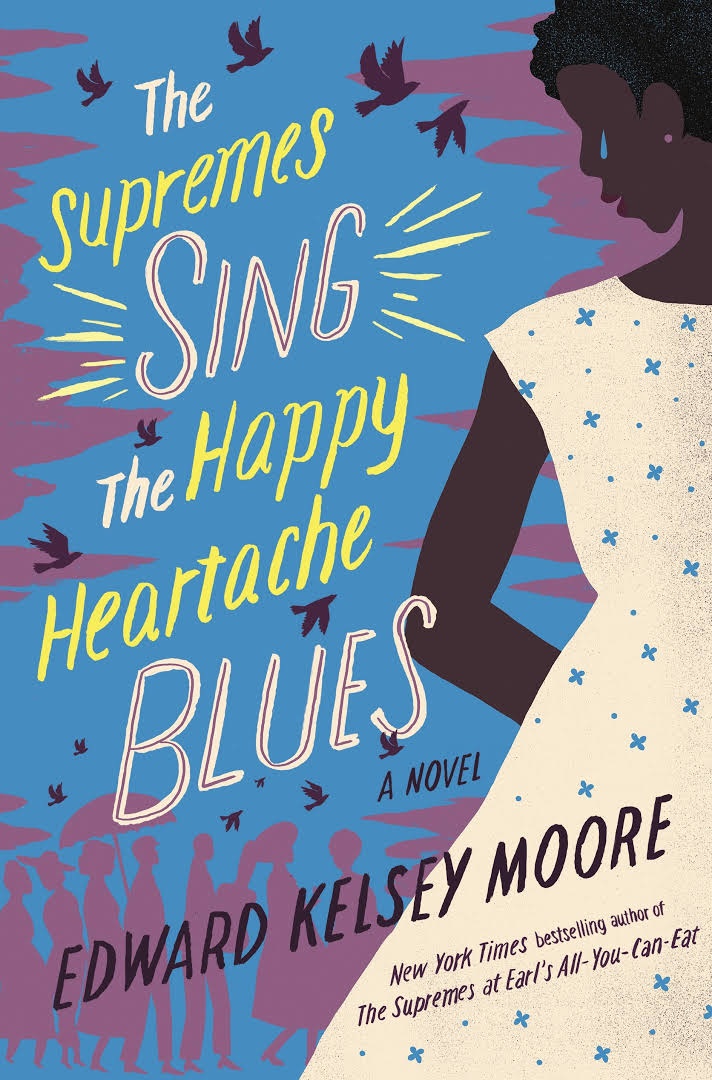 Recently, I have noticed a pattern. The way I describe life as a cellist and a writer depends on where I am in the concert season. With the free time that summer grants me before the season starts, I begin new projects and fantasize that my knowledge of musical forms will make them easy. In autumn, when rehearsals and concerts resume, I feel so lucky to be playing regularly again, even as it distracts me from writing, that I welcome those happy pie-and-cake feelings once more. Mid-season, gratitude flies out the window and the circus is back in town.
Recently, I have noticed a pattern. The way I describe life as a cellist and a writer depends on where I am in the concert season. With the free time that summer grants me before the season starts, I begin new projects and fantasize that my knowledge of musical forms will make them easy. In autumn, when rehearsals and concerts resume, I feel so lucky to be playing regularly again, even as it distracts me from writing, that I welcome those happy pie-and-cake feelings once more. Mid-season, gratitude flies out the window and the circus is back in town.
Fortunately, I am blessed with something akin to the seasonal amnesia that sets in each warm, beautiful spring and stops Midwesterners like me from moving to more manageable climates. The orchestra season has just ended and already I have no memory of the stress of balancing those plates. I don't recall ever having been on a unicycle.
A Good Country
by Laleh Khadivi
Laleh Khadivi's A Good Country is the third in a loosely formed trilogy (after The Age of Orphans and The Walking) featuring three generations of Iranian men. In this final volume, 14-year-old Reza Courdee walks a careful line between his parents' Iranian heritage and his desire to fit in at the Laguna Beach, Calif., high school he attends.
As A Good Country unfolds over the span of his adolescence, Reza transforms and transforms again. He is a pot-smoking, partying, surfing American teen; then the dutiful student who befriends others from similar backgrounds; and then a college-bound young man on the cusp of adulthood. As he changes, so does the world around him: frequent terrorist attacks raise fear and suspicion of anyone from Muslim descent. Reza, his family and friends are subjected to increasing instances of hatred and racism. Though not raised a practicing Muslim, Reza becomes drawn to Islam as a source of peace and clarity in a world dominated by chaos. When that calling evolves into an imperative to travel to Syria to join the fight, Reza must decide what it is that will make him a man: Love? Independence? A battle for what he believes in?
Khadivi's prose offers lyrical depictions of California's vast beauty and ocean aside clipped descriptions of the violence and hatred Reza experiences from his once-friends and neighbors. As Reza comes of age, A Good Country proves a riveting, heartbreaking portrait of one young man's yearning for a good country to call his own, "a life made of family and God and love." --Kerry McHugh, blogger at Entomology of a Bookworm
Discover: In the third of a loosely formed trilogy, Laleh Khadivi explores an Iranian American teen's coming of age.
The Supremes Sing the Happy Heartache Blues
by Edward Kelsey Moore
Edward Kelsey Moore revives the appealing characters introduced in The Supremes at Earl's All-You-Can-Eat for his second novel, The Supremes Sing the Happy Heartache Blues. When wandering bluesman El Walker returns to his hometown of Plainview, Ind., to play at an old friend's late-in-life wedding, his presence shakes things up for a lot of people. His estranged son, James, for example, and wife Odette (who can talk to ghosts), as well as Odette's best friend, Barbara Jean, whose mother, Loretta, knew El when they were young. Meanwhile, Odette, Barbara Jean and their friend Clarice--known collectively as "the Supremes"--are dealing with other major struggles.
Moore alternates between third-person narration and first-person commentary from Odette, whose frequent visits with her deceased mama (now hanging around the afterlife with Eleanor Roosevelt) provide wry comic relief. As Odette deals with the effect El's sudden reappearance has on her usually unflappable husband, Clarice prepares for a big piano performance (battling a serious case of nerves), and Barbara Jean talks with El about the mother she struggled to love. Several running subplots, such as the ministerial ambitions of Clarice's cousin Veronica, round out the story, and El's melancholy blues music, including the titular song, runs throughout the narrative.
Like its title, Moore's story encompasses both happiness and heartache, but the end result is warm and satisfying, like the cherry pie at Earl's diner. This is a heartwarming story of friendship, reckoning with the past and learning to forgive (even when holding a grudge is more appealing). --Katie Noah Gibson, blogger at Cakes, Tea and Dreams
Discover: Three lifelong friends, known as "the Supremes," reckon with happiness and heartache in Edward Kelsey Moore's satisfying second novel.
The Summer House
by Hannah McKinnon
If the summery title and perfect seaside cover don't make it clear, The Summer House is beach reading at its finest. Hannah McKinnon (The Lake Season, Mystic Summer) creates a hilarious clan in the Merrill family. Flossy Merrill, the matriarch, has summoned her grown children back to the family's summer house in Rhode Island for a week, to celebrate their father's 75th birthday. The occasion will also celebrate their last summer with the house--though the children don't know it--because Flossy and Richard have agreed to sell it to help fund their retirement.
Their three children are already tense. Paige, the eldest, is a veterinarian with a busy practice, two teenagers and a husband out of work. Sam, the only boy, and his husband have hit a snag in their adoption plans since the birth mother changed her mind. And Clem, the baby of the family, has suffered an unimaginable loss and is still grieving.
Paige, Sam, Clem and their respective spouses and offspring gather for a crazy week of party planning, swimming, family dinners and more than a few family arguments. For years, sibling rivalries have simmered beneath the surface, and as the end of the summer-house era nears, tensions finally boil over.
Poignant and funny, with well-crafted prose and charming characters, this novel is completely absorbing. Sure to appeal to readers of Elin Hilderbrand and Dorothea Benton Frank, The Summer House is an intriguing glimpse into a complicated yet still loving family. --Jessica Howard, blogger at Quirky Bookworm
Discover: Stubborn septuagenarian Flossy Merrill gathers her three grown children and their families together for a final summer at their beach house.
Behind the Moon
by Madison Smartt Bell
When novelist Madison Smartt Bell (All Souls Rising) gets into something, he goes long. His trilogy of novels about Toussaint L'Ouverture and the Haitian Revolution ran to more than 2,000 pages. With similar immersion in history and legend, Behind the Moon digs into Native American mythology and symbolism, and weaves them gently into a story about a group of high school kids out for kicks in the Dakota Badlands. This time, however, Bell tells his compelling story in only 280 pages.
Behind the Moon begins simply enough with two girls and three boys cutting Friday classes to camp out, drink some beer and mess around. When Julie realizes that her best friend's boyfriend, Sonny, and his buddy Marko have more in mind than camping, she has already innocently drunk from a water bottle laced with Ecstasy and LSD. While head tripping and running from the boys' crude attempts to coerce her into a pornographic video, she falls into a dark cave filled with ancient Indian drawings. Only the third boy, Jamal, searches for her and eventually walks to town to get help. Julie's plight, Jamal's friendship and the thuggish boys' attempts to hide their involvement make for a compelling and mystical experience for readers. Furthermore, Bell's challenging dip into magical realism to describe the girl's visions and their transformative effect on her self-discovery give Behind the Moon heft and strength. Bell can mesmerize even when his novels run short. --Bruce Jacobs, founding partner, Watermark Books & Cafe, Wichita, Kan.
Discover: Bell packs the nuance of Native American symbolism and mythology into a straightforward, concise story of teen self-discovery.
Mystery & Thriller
The Long Drop
by Denise Mina
A lawyer, a businessman accused of killing his family and a lifelong criminal walk into a bar in 1950s Scotland. This isn't a joke, but rather the captivating opening gambit of Denise Mina's standalone psychological thriller The Long Drop. Fresh from prison, Peter Manuel claims to know who murdered William Watt's family. When Watt's lawyer departs, the remaining pair leaves the bar together and spends the next 12 hours drinking and scheming, each trying to gain the upper hand.
Manuel clearly has knowledge only the murderer should know, and Mina (Gods and Beasts) weaves the men's cat-and-mouse night out with Manuel's trial on several counts of murder months later. Those familiar with Scottish serial killers may know how events unfold: The Long Drop is based on a true story, with names unchanged, and the book's title is its own spoiler alert. But the gift here is not in the creation of a new tale so much as it is in the layered telling of one based on fact and the inspired reimagining of its details.
Mina is at her finest in form and substance. The alternating timelines escalate the tension as the investigation and trial spool toward a verdict. The courtroom scenes are particularly engrossing. Mina's matter-of-fact style gets more poetic as the trial proceeds; her ability to finesse a fully framed portrait of each witness with few words is on grand display. The Long Drop is a fascinating story of murder and madness, two guns with varied histories, multiple confessions and one man's plan to outsmart everyone around him. --Lauren O'Brien of Malcolm Avenue Review
Discover: The fictionalized account of a true serial killer and the games he played with authorities, the court and others potentially involved in his heinous crimes.
Food & Wine
Sweet Spot: An Ice Cream Binge Across America
by Amy Ettinger
Journalist Amy Ettinger dishes up ice cream in Sweet Spot, an adventurous, thoroughly researched exploration into the U.S. love affair with frozen sweet treats. Ettinger is a self-proclaimed ice cream connoisseur turned ice cream snob and addict: "Ice cream is more like a drug than any other food... the more ice cream you eat, the more you have to eat it to regain that 'high.' " Ettinger consumes ice cream almost daily and stocks between $15 and $30 worth in her freezer at all times. Her richly entertaining, easy-to-read narrative is infused with history, recipes and the science behind what makes for delicious--and sometimes not-so-delicious--flavors. She also looks at innovators and imitators, and how the ice cream business continues to evolve.
The philosophy and wisdom of past and present ice cream makers--along with segues into soda shops and fountains, sundaes and floats, ice cream sandwiches, cones, frozen yogurt and the gelato craze--are swirled into Ettinger's tasty quest. What rises to the fore, however, are sections devoted to Ettinger working alongside fellow ice cream aficionados and business people--and her enrolling in "the world's most famous ice cream making class" at Penn State. There, she learned the fascinating ins and outs of pasteurization, flavoring, potential hazards, short cuts and tricks of the trade--both good and bad. Ettinger piles on double and triple scoops of fun information that offers literary deliciousness for ice cream lovers everywhere. --Kathleen Gerard, blogger at Reading Between the Lines
Discover: A passionate ice cream lover explores the history, business, science and sheer deliciousness of American ice cream culture.
Biography & Memoir
Meet Me in the In-Between
by Bella Pollen
Novelist (Summer of the Bear) and journalist Bella Pollen's memoir opens with her believing she's being visited by an incubus, a demon intent on having sex with her at the awful hour of 4 a.m. Writer's block quickly follows, and Pollen realizes that in order to get rid of her nighttime visitor and move on, she must reexamine her past, beginning with her childhood.
Humorous, self-deprecating and filled with odd moments one might expect from a person who believes she was haunted, Meet Me in the In-Between takes readers into Pollen's formative years, when she tried to get kidnapped by an old man in Central Park and her father kept an alcoholic parrot. She quickly moves on to her early marriage and children with an Italian art dealer, and the extended family that could be taken from the Godfather movies. Other adventures include a trip with women friends in the wilderness of the American West, a second marriage and more children, and the fondness she shared with her father for going to the movies during the day. She also indulges an intense desire to cross and recross the border between Mexico and the U.S., using several illegal methods and befriending smugglers obsessed with Pink Floyd. Carefully blended with these escapades are Pollen's reflections on motherhood, family and her fear of confinement and entrapment. The effect leaves readers wondering: What comes next for this woman willing to risk so much to avoid banality? --Lee E. Cart, freelance writer and book reviewer
Discover: Meandering through the memories of her life, Bella Pollen faces the demons that haunt her.
Essays & Criticism
Night Thoughts
by Wallace Shawn
Actor and playwright Wallace Shawn is best known for his small comedic roles (he'll probably be forever recognized as Vizzini in The Princess Bride). But theater lovers have likely admired his disturbing, witty political plays since the late 1970s. Night Thoughts isn't drama, but it does touch on politics, pondering the meaning of modern life in the face of the destruction it has wrought.
Framed as a meditation while sitting in a hotel, Night Thoughts reflects on Shawn's youth and his erstwhile commitment to civilization. Now, in his 70s, he's well aware the benefits that he enjoyed as a white male came at a cost to others he'll never truly have to reckon with. Musing about a possible future uprising by those with little power, wealth or stature, Shawn admits he'd open his door to them, allowing them to take his home and property, none of which Shawn seems to think he really deserves. It's one thing to decry inequality, but Shawn's sanguine response to revolution is probably why Night Thoughts is being released by the radical independent publishing house Haymarket Books.
Bloody revolt aside, Shawn has a way of pulling the reader into conversation, making the experience of Night Thoughts feel like more than moving through an extended essay by an important American playwright and actor. Somewhere, as one reads it, the feeling of friendship appears, as if Shawn has known you for years, and now, late in his life, he's decided to tell you what it's all about. --Noah Cruickshank, adult engagement manager, the Field Museum, Chicago, Ill.
Discover: Night Thoughts is a long-form essay from a celebrated American playwright and actor.
Science
The Seeds of Life: From Aristotle to da Vinci, from Sharks' Teeth to Frogs' Pants, the Long and Strange Quest to Discover Where Babies Come From
by Edward Dolnick
Edward Dolnick (The Clockwork Universe) looks back on the surprisingly elusive mystery of human reproduction in The Seeds of Life: From Aristotle to da Vinci, from Sharks' Teeth to Frogs' Pants, the Long and Strange Quest to Discover Where Babies Come From.
Dolnick surveys the various wrong-headed theories, blind alleys and occasional moments of experimental genius that marked the scientific road to understanding. He drops in on Leonardo da Vinci and the anatomists, whose macabre investigations revealed much about the inner workings of the human body. Readers are introduced to William Harvey, who famously proved the heart's purpose as a muscle and came tantalizing close to discovering mammalian eggs at a time (the 1600s) when "witches still flew through the night." Leeuwenhoek and his famous microscopes lead to a heated centuries-long debate between "ovists" and "spermists," as well as the fantastical-seeming theory of pre-existence. Even the era's successes are often marked by oddities--an experiment that entailed sewing tight-fitting boxers for frogs comes to mind.
Dolnick demonstrates how scientists were often influenced and misled by their deep religious beliefs, as well as their prejudiced attitudes toward women, but he also emphasizes the enormous barriers to understanding they faced. Dolnick explains that modern people are beneficiaries of a scientific revolution, a victory "so complete that we take it for granted, to the point that we scarcely remember that we've built our homes on what was once a battleground." Dolnick is an entertaining guide to a small but significant corner of that revolution. --Hank Stephenson, bookseller, Flyleaf Books, Chapel Hill, N.C.
Discover: This book explores science's bumpy, often hilariously wrong-headed journey toward understanding the mysteries of human reproduction.
Health & Medicine
Hi Gorgeous! Transforming Inner Power into Radiant Beauty
by Candis Cayne and Katina Z. Jones
Glamorous transgender actress Candis Cayne believes beauty and confidence come from within. Her upbeat and empowering self-help guide, Hi Gorgeous!, begins by helping readers dismantle their insecurities (fed by a body-shaming media) and build up their self-confidence. "If you don't believe you're beautiful or even worthy of beauty in the first place, you're never going to experience the absolute joy that comes from living a life of radiance, happiness, and especially freedom," writes Cayne. Mixed into these opening chapters are Cayne's memories of growing up effeminate in Hawaii. "I knew in my heart and soul that I was born to be a woman," she writes. "These feelings, though, confused and angered people, so growing up was not always easy."
Cayne details how inner beauty can be achieved through yoga, visualization, exercise, meditation and diet. Steps toward outer radiance include skin care, makeup tips, hair care, clothing for every body type, jewelry/accessories and essentials for a complete wardrobe. The final chapters offer advice for online dating and for projecting confidence at job interviews.
Hi Gorgeous! is welcoming and useful to trans and cis readers alike, with the beauty and makeup sections striving toward Cayne's classic elegance. Cayne and coauthor Katina Z. Jones's energetic and encouraging advice is complemented by Frances Soo Ping Chow's fun book design and Kourosh Sotoodeh's stunning photos. This is a thoughtful, generous and helpful guide that offers solid steps to embracing and showcasing your inner and outer beauty. --Kevin Howell, independent reviewer and marketing consultant
Discover: Trans actress Candice Cayne's guide to achieving inner and outer beauty is upbeat, empowering and beautifully designed and illustrated.
Children's & Young Adult
The Gentleman's Guide to Vice and Virtue
by Mackenzi Lee
Roguish Henry Montague, his younger and more intellectual sister, Felicity, and his biracial, very sensible best friend and secret crush, Percy Newton (who suffers from epilepsy), are off on their European Grand Tour, a common event among the upper classes in 1720s Europe. Monty, an English earl's son, has his mind more on vice than virtue: sex (with both men and women), drinking, smoking and gambling are his proclivities and constant subjects of banter. But his interest in Percy--who Monty is not even sure is attracted to men--is something beyond lust. In the first paragraph of the novel, Monty, thinking of Percy asleep next to him, has a "disorienting moment" in which "it's unclear whether we've slept together or simply slept together."
While at the Palace of Versailles, Monty gets in trouble with the Duke of Bourbon ("advisor" to the young, unhealthy king Louis XV) when he steals a special box--locked with a code--that has a key inside. Soon after, they are beset by highwaymen (including the disguised duke) and forced to continue on without funds. The undaunted teens travel through France to Spain, where they meet the daughter and son of an alchemist who has developed a panacea: the reason for the Duke's single-minded pursuit. The Duke wants the "cure-all" for the king, and Monty wants it for Percy; who will be the first to reach the tomb on the sinking Venetian island where the alchemical miracle can be found?
In The Gentleman's Guide to Vice and Virtue, Mackenzi Lee (This Monstrous Thing) combines her knowledge of European history with a contemporary, comic sensibility to create an over-the-top romantic adventure complete with cliff-hanging chapter endings and sometimes outrageous narration. Monty is a licentious, flawed and engaging 18th-century hero. --Melinda Greenblatt, freelance book reviewer
Discover: In 18th-century Europe, teens Monty and Percy endure hardships and adventures as their romantic relationship--affected by issues of race, sexuality and illness--evolves.
The Too-Scary Story
by Bethanie Deeney Murguia
"One dark night, in a house on a hill," two children ask Papa to tell them a bedtime story. Grace, the older of the siblings, wants it to be a scary story (she has her wand, after all, and scary stories are okay when one has a wand on hand). Papa begins: "One night, two brave explorers and their dog were walking home through the forest. It was very, very... dark."
"Too scary!" Walter, Grace's little brother, exclaims, and Papa eases the fright factor and brings in the fireflies. Over and over, Papa weaves a scary story to please Grace and then adjusts to quell Walter's fear. Bethanie Deeney Murguia's page turns are impeccably timed in The Too-Scary Story: as Papa rapidly recalibrates, the page turns whip the reader back and forth. On one page, Grace, Walter and Papa are bathed in the warm, gentle colors of a brightly lit bedroom. On the next, the sentence completes in the deep, dark blues and blacks of an inhabited forest at night.
As Grace grows weary of Papa's shifting narrative and starts to complain, the too-tame story becomes overly scary--even for Grace. The dusky blue-green backgrounds of Walter's firefly bedtime story shift to blue-black and shadows reach from the edges, encroaching upon the children's space. Luckily, though, Grace has her wand. --Siân Gaetano, children's and YA editor, Shelf Awareness
Discover: Two children learn that Papa's scary bedtime stories are really very scary in Bethanie Deeney Murguia's The Too-Scary Story.
Discover Great Publishers
A Storied History--and Future
Chronicle Books
In 1967, the summer of love in San Francisco, Chronicle Books was founded as an offshoot of the San Francisco Chronicle, mostly publishing material by the newspaper's columnists. Soon the book program moved beyond its local focus, and Chronicle Books established its distinctive style, publishing books that are of the highest quality yet affordable, beautifully designed, amusingly and informatively written, and that approach subjects from different and often charming perspectives.
 |
|
|
Nion McEvoy (photo: Joseph Seif) |
|
That Chronicle Books Quality
A key aspect of what distinguishes Chronicle books is tactile appeal. As Nion McEvoy, chairman and CEO of the McEvoy Group, owner of Chronicle Books and a 30-year veteran of the publisher, puts it: "There's always been a sensuous quality to the publishing, appealing to the senses as well as to the intellectual quality of the books. Our books have a light touch with a seriousness of execution."
For his part, Jack Jensen, the longtime president of Chronicle Books until he became president of the McEvoy Group at the beginning of the year, says that Chronicle Books, early on developed a style of books that were "distinctive, curious objects and seductive at retail."
Tyrrell Mahoney, who succeeded Jensen as president of Chronicle Books, cites the "beauty and surprise and magic" of the company's books as qualities that Chronicle Books has maintained even as it's grown, now publishing more than 300 new titles a year with a staff of 200.
Publisher Christine Carswell observes, too, that "there's a lot of humor in our children's books and a lot of our adult publishing." The company also is "very democratic," she says, offering "people value for their money."
 |
|
| Jack Jensen (photo: Irene Kim) | |
The Early Days
In the 1970s, parent company Chronicle Publishing, which besides the San Francisco Chronicle, owned six other newspapers, four NBC affiliates and a cable division, neglected its book division, giving its young heads exceptional leeway--and an unusual amount of creative opportunity. Jensen described the situation this way: "As long as we were not losing money and were growing revenues, we were able to map our own direction."
That direction quickly became apparent. Because Chronicle Books printed many books in Japan and staff went there regularly to check print runs, "printers introduced us to Japanese publishers," Jensen says. "We discovered a lot of books with great visual content, mostly design and photography books with little text, beautifully produced, that we could do in trade paper at affordable prices."
Chronicle Books started buying rights to these books and others, which were unusual in the U.S. at the time, and became "a pioneer of doing trade paperbacks with flaps and of illustrated paperbacks," which made them affordable and appealing to "people our own age. It was the format of choice of the younger generation."
 |
|
| Tyrrell Mahoney (photo: Irene Kim) | |
Company Highlights
Over the years, the company began distributing "a select group" of other publishers, which was "a very important part of what helped us build the business and build our sales and marketing effort," Jensen says. Client publishers include Princeton Architectural Press, Moleskine, Laurence King Publishing, Hardie Grant Books, Sierra Club and Quadrille Publishing.
Unlike most publishers, Chronicle Books operates several bookstores, with three in San Francisco and one in Tokyo, where it focuses on selling its own and distributed publisher titles. It's also opened several kiosks in Dymocks stores in Australia.
The San Francisco stores are particularly important, Mahoney says, because they're "a great way to bring our brand to the city more directly," a brand that imbues "the California lifestyle aesthetic."
One of the biggest changes came in 1999, when Nion McEvoy, a great-grandson of the founder of the San Francisco Chronicle, bought Chronicle Books when the family was selling the various parts of the overall company. As Carswell observes, "That's when we became a fully independent publisher. We had a lot of autonomy when we were part of the Chronicle Publishing family, but things took on a new order when Nion became the owner. He has supported us with our independence and that independence of spirit."
 |
|
| Christine Carswell (photo: Irene Kim) | |
The Future Is Now
At the beginning of this year, Jensen became president of the McEvoy Group, which besides Chronicle Books owns Galison/Mudpuppy, Princeton Architectural Press and ISeeMe. "I thought it was a great time to turn the reins over to someone with a younger perspective," he says, adding that Mahoney, who joined the company in 1996, is "revered internally and externally, and like me, she comes out of sales," which he called "a sound footing to run a publishing business."
Mahoney says that among her plans are "to continue to innovate and expand our reach in new market channels and bring books to people who may not be thinking about books as a gift." She defines gifts in a broad way: "Chronicle Books has what consumers need, whether it's a gift of a children's book for grandchildren or a beautiful box of stationery or a great humor book for your dad."
Remembering that many in the industry believed not long ago that digital books would dominate the business, she notes that high-quality printed books and related physical products are if anything more popular than ever. She says, "it's really heartening" for Chronicle Books, a company that has been and continues to be "focused on the physical and tactile experience of books."
Here's to another great 50 years for Chronicle Books!
Titles That Built Chronicle Books
Backlist Landmarks
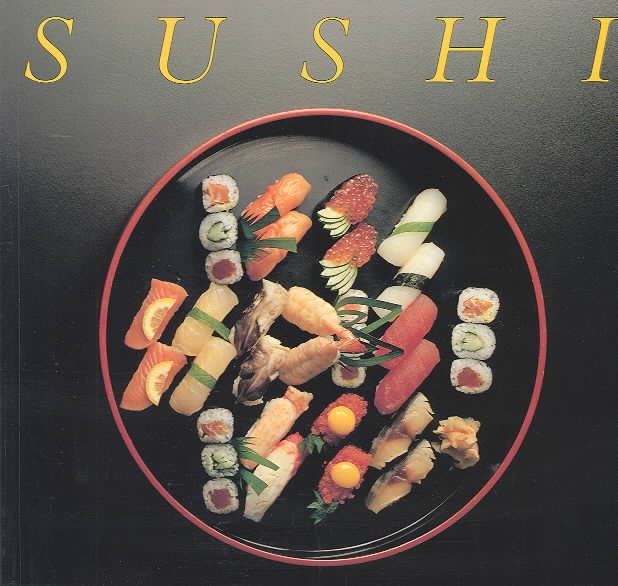 Sushi by Mia Detrick, photographs by Kathryn Kleinman ($12.95, 9780877012382, published in 1981). This trade paperback rolled out the art of sushi to Americans and began the trend of single-subject cookbooks. Sushi was Chronicle Books entrée into the food business, as Jack Jensen notes.
Sushi by Mia Detrick, photographs by Kathryn Kleinman ($12.95, 9780877012382, published in 1981). This trade paperback rolled out the art of sushi to Americans and began the trend of single-subject cookbooks. Sushi was Chronicle Books entrée into the food business, as Jack Jensen notes.
Gifts of Age: Portraits and Essays of 32 Remarkable Women by Charlotte Painter, photographs by Pamela Valois ($16.95, 9780877013686, published in 1985). These inspirational accounts showcase women over the age of 65 who have discovered new paths in life, including M.F.K. Fisher, Joan Baez Senior, Louise M. Davies, and Julia Child, who appears on the cover.
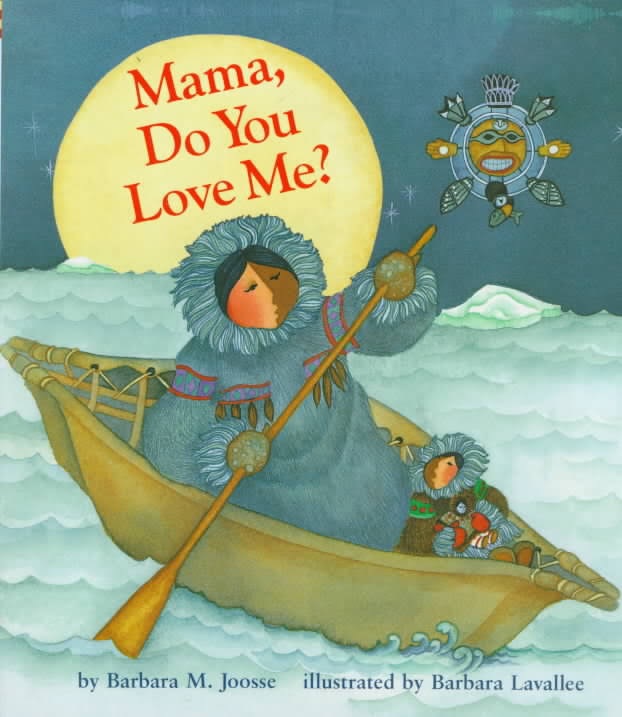 Mama, Do You Love Me? by Barbara M. Joosse, illustrated by Barbara Lavallee ($6.99, 9780811821315, published in 1991). This classic children's book about an Inuit mother and daughter has sold more than four million copies. Papa, Do You Love Me?, about a Masai father and son, was released in 2005.
Mama, Do You Love Me? by Barbara M. Joosse, illustrated by Barbara Lavallee ($6.99, 9780811821315, published in 1991). This classic children's book about an Inuit mother and daughter has sold more than four million copies. Papa, Do You Love Me?, about a Masai father and son, was released in 2005.
Griffin & Sabine: An Extraordinary Correspondence by Nick Bantock ($19.95, 9780877017882, published in 1991). Griffin & Sabine is a novel told through illustrated letters, which readers have to pry from envelopes inside the book--interloping in a correspondence between two lovers. This first in a six-part series became a landmark bestseller for Chronicle Books.
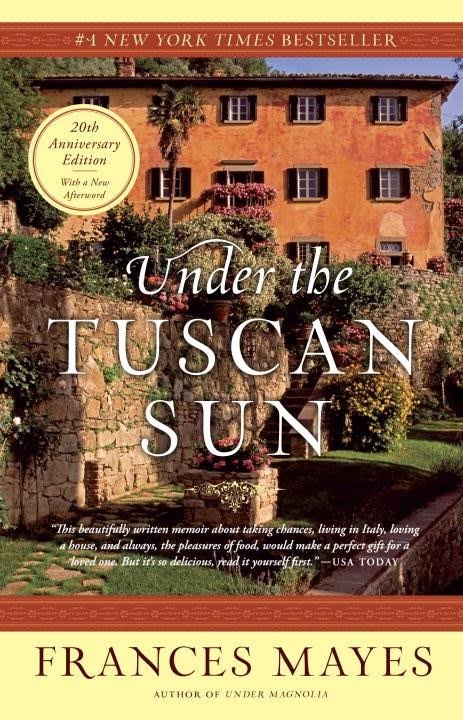 Under the Tuscan Sun: At Home in Italy by Frances Mayes ($22.95, 9780811808422, published in 1996). This memoir of an American gourmet cook, travel writer and poet who purchased an abandoned villa in the Italian countryside and renovated it was an immediate bestseller and is still in print.
Under the Tuscan Sun: At Home in Italy by Frances Mayes ($22.95, 9780811808422, published in 1996). This memoir of an American gourmet cook, travel writer and poet who purchased an abandoned villa in the Italian countryside and renovated it was an immediate bestseller and is still in print.
Olive, the Other Reindeer by J. Otto Seibold and Vivian Walsh ($15.99, 9780811818070, published in 1997) follows a dog who mishears the classic Christmas song and joins Santa's reindeer team. Olive's striking art style helped create Chronicle's reputation for aesthetically unique books.
 Spring Is Here by Taro Gomi ($6.99, 9780811823319, published in 1999) uses simple words and bold pictures to show young children the progression of seasons. Spring Is Here "was just so far ahead of its time in understanding the way babies and toddlers view the world in really intuitive ways, and not necessarily the way adults view it," says Ginee Seo. Taro Gomi, an author/illustrator from Japan, continues to create similar books for Chronicle.
Spring Is Here by Taro Gomi ($6.99, 9780811823319, published in 1999) uses simple words and bold pictures to show young children the progression of seasons. Spring Is Here "was just so far ahead of its time in understanding the way babies and toddlers view the world in really intuitive ways, and not necessarily the way adults view it," says Ginee Seo. Taro Gomi, an author/illustrator from Japan, continues to create similar books for Chronicle.
The Worst-Case Scenario Survival Handbook series by David Borgenicht and Joshua Piven (the eponymous first title made its debut in 1999) has entries covering all kinds of dangerous situations--some more likely than others--such as surviving in the Amazon, on Mt. Everest, traveling through New York City or going on a date.
 Enemy Pie by Derek Munson, illustrated by Tara Calahan King ($15.99, 9780811827782, published in 2000). When a rival new kid moves in down the block, a young boy learns the secret recipe for a pie that gets rid of enemies, though he'll have to spend the day playing with him first. "It's a book about bullying before bullying became the focus of so many school programs," says Ginee Seo. "Ahead of its time."
Enemy Pie by Derek Munson, illustrated by Tara Calahan King ($15.99, 9780811827782, published in 2000). When a rival new kid moves in down the block, a young boy learns the secret recipe for a pie that gets rid of enemies, though he'll have to spend the day playing with him first. "It's a book about bullying before bullying became the focus of so many school programs," says Ginee Seo. "Ahead of its time."
The Beatles Anthology by the Beatles ($60, 9780811826846, published in 2000) was created with the full cooperation of Paul McCartney, George Harrison and Ringo Starr to tell the story of the Beatles.
 Cake Pops: Tips, Tricks, and Recipes for More Than 40 Irresistible Mini Treats by Angie Dudley ($19.95, 9780811876377, published in 2010) began an international snack food craze for cute cakes mounted on sticks.
Cake Pops: Tips, Tricks, and Recipes for More Than 40 Irresistible Mini Treats by Angie Dudley ($19.95, 9780811876377, published in 2010) began an international snack food craze for cute cakes mounted on sticks.
 Goodnight, Goodnight Construction Site by Sherri Duskey Rinker, illustrated by Tom Lichtenheld ($16.99, 9780811877824, published in 2011). As night falls on a construction site, machines like Cement Mixer, Dump Truck and Bulldozer bid goodnight. A sequel to this bestselling children's book, Mighty, Mighty Construction Site, was released on February 14, 2017.
Goodnight, Goodnight Construction Site by Sherri Duskey Rinker, illustrated by Tom Lichtenheld ($16.99, 9780811877824, published in 2011). As night falls on a construction site, machines like Cement Mixer, Dump Truck and Bulldozer bid goodnight. A sequel to this bestselling children's book, Mighty, Mighty Construction Site, was released on February 14, 2017.
Chronicle Books has a long history of publishing Star Wars titles and has enjoyed a relationship with George Lucas stretching back to the beginning of the franchise. Darth Vader and Son by Jeffrey Brown ($14.95, 9781452106557, published in 2012) is a humorous, illustrated imagining of Darth Vader as an attentive father to a young Luke Skywalker, which spawned calendars, postcards, a coloring book and an offshoot with Leia, Vader's Little Princess.
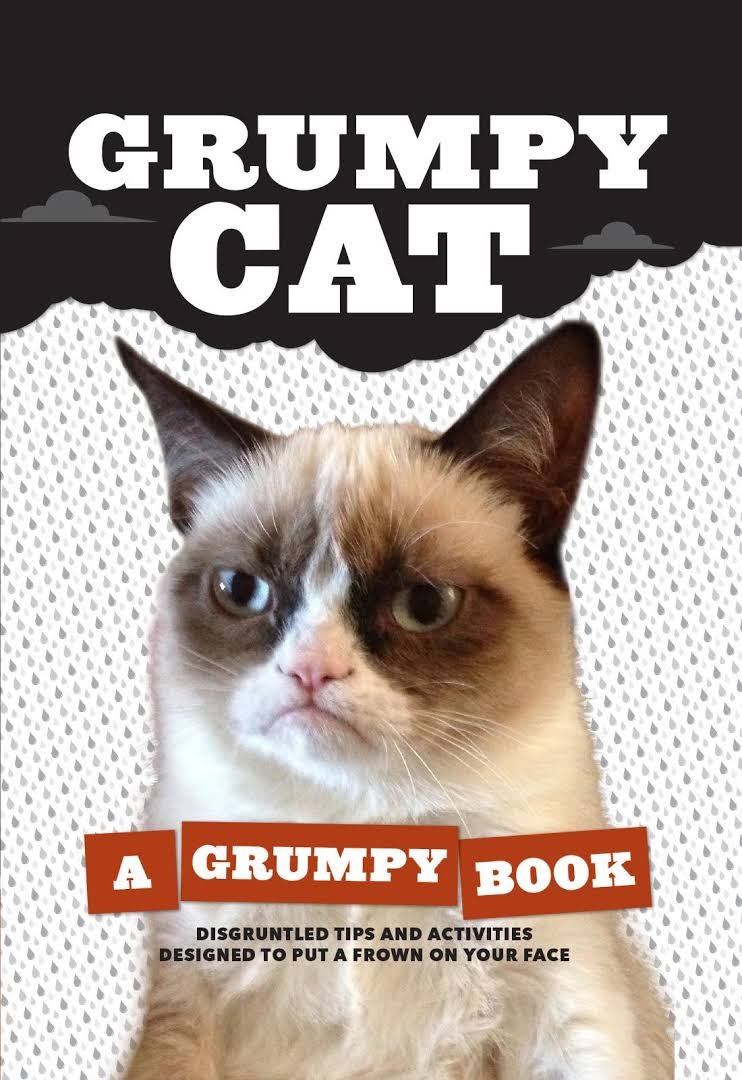 Grumpy Cat: A Grumpy Book by Grumpy Cat ($12.95, 9781452126579, published in 2013) brought everyone's favorite feline meme to the printed page. This sourpussy cat also has his own line of postcards, calendars and notebooks.
Grumpy Cat: A Grumpy Book by Grumpy Cat ($12.95, 9781452126579, published in 2013) brought everyone's favorite feline meme to the printed page. This sourpussy cat also has his own line of postcards, calendars and notebooks.
Josephine: The Dazzling Life of Josephine Baker by Patricia Hruby Powell, illustrated by Christian Robinson ($17.99, 9781452103143, published in 2014) won the Coretta Scott King Book Award and the Robert F. Sibert Informational Book Award, among other accolades. Josephine is an illustrated biography of the performer and civil rights advocate.
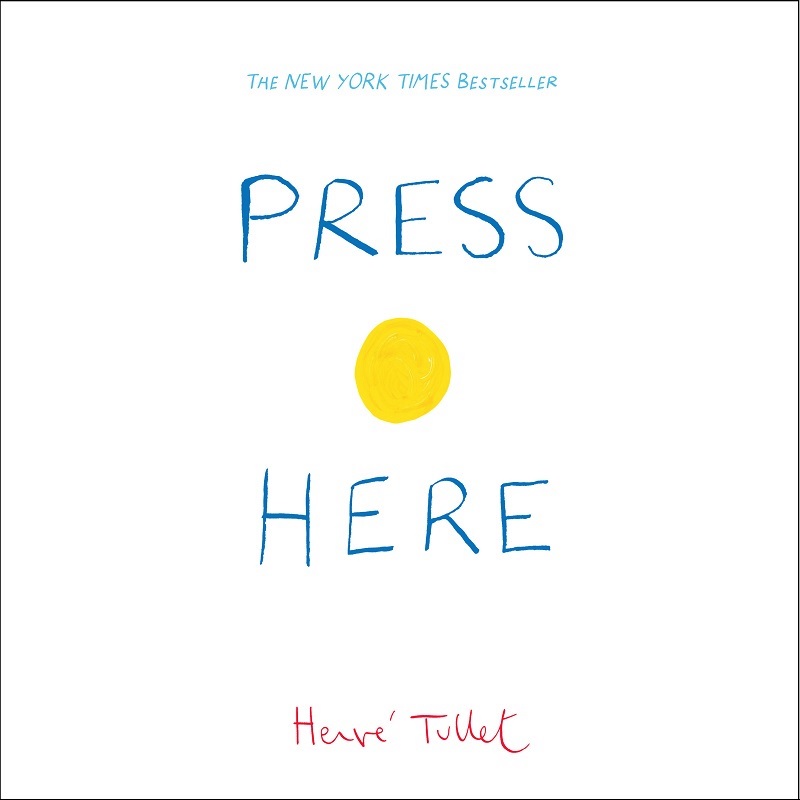
Press Here by Hervé Tullet ($15.99, 9780811879545, published in 2011). In this book for early readers, children are prompted to push a yellow dot and follow the instructions as it multiplies and changes color, all on printed pages. Tullet's work is an entertaining counterpoint to the age of ubiquitous iPads. It spent 300 weeks on the bestseller list. Tullet's Mix It Up! ($15.99, 9781452137353, published in 2014) continues the interactive magic of Press Here with more colors, shapes and even sounds for kids to follow along with. His most recent work is Let's Play! ($15.99, 9781452154770, March 29, 2016), which brings the original yellow dot from Press Here back for more fun, this time with a thin black line. Say Zoop! ($15.99, 9781452164731) comes out August 2017.
The Ivy and Bean series by Annie Barrows and Sophie Blackall has been a major bestseller since the first book came out in 2010. The illustrated antics of these two mischievous girls will continue with a new book coming in fall 2018. Thus far, Ivy and Bean have had 10 adventures, ranging from detective work and paleontology to dancing and babysitting. Annie Barrows is also co-author of The Guernsey Literary and Potato Peel Pie Society. Sophie Blackall is an Australian illustrator currently living in Brooklyn, N.Y.
 They All Saw a Cat by Brendan Wenzel ($16.99, 9781452150130, published in August 2016) imagines a wandering pet cat from multiple perspectives, each with its own vivid rendering. The cat's human, for example, sees something very different than a poor pursued mouse. They All Saw a Cat was a 2017 Caldecott Honor Book.
They All Saw a Cat by Brendan Wenzel ($16.99, 9781452150130, published in August 2016) imagines a wandering pet cat from multiple perspectives, each with its own vivid rendering. The cat's human, for example, sees something very different than a poor pursued mouse. They All Saw a Cat was a 2017 Caldecott Honor Book.


